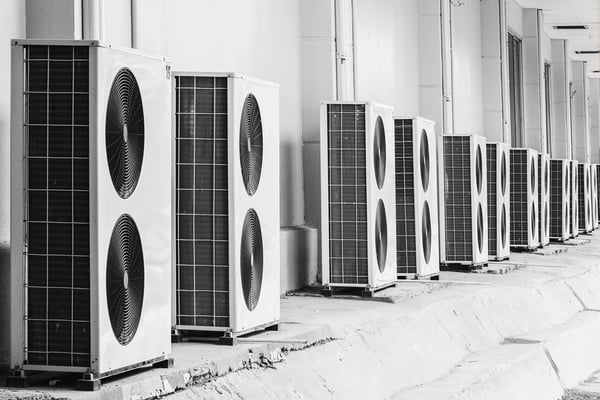Managing a modern electrical grid is a huge challenge. Energy consumption is constantly changing, while solar panels and wind turbines have added the element of variable output. Electrical networks must also be designed for the highest load of the year, even if they operate at partial capacity the rest of the time.
The hottest days of summer are critical for power grids, as buildings use air conditioning equipment at full capacity. When you add the load of all refrigeration systems in homes and businesses, the load on the grid becomes significant. If the energy company is not prepared for this, electrical failures and blackouts can be expected at various points.
Improve the efficiency of your air conditioning system.
The fact that air conditioning is the biggest load during the summer also creates an opportunity. If building owners focus on improving their AC efficiency, demand on the electrical grid can be drastically reduced. Homes and businesses save on their energy bills, while the load on the electricity grid is reduced.
Factors that increase air conditioning expenses
A building's air conditioning needs are strongly determined by its size and intended purpose, as well as the number of occupants and the local climate. Normally, these factors cannot be changed, which means that the design of the air conditioner must adapt to them.
However, there are other aspects that affect air conditioning costs and can be improved during the design process:
- Building envelope : Insulation, airtightness and energy-efficient windows can reduce heat gain in buildings.
- Equipment efficiency : The nominal efficiency of air conditioning units influences energy costs. Small units use the Seasonal Energy Efficiency Index (SEER), while larger units use the Integrated Energy Efficiency Index (IEER).
- Temperature controls : Thermostat setting also affects energy consumption. Energy use can increase by up to 3% for every 1°F the thermostat is turned down, according to the U.S. Department of Energy.
How air conditioning loads affect the electrical grid
The combined load of thousands of air conditioners has another negative consequence. Utilities must bring all of their generating capacity online, and this includes peaking plants with high operating costs. Distribution and transmission lines also carry a high current, which means more energy is being wasted as heat.
In short, demand spikes are harmful for both utility companies and their customers:
- Electricity prices rise as more expensive power plants come online.
- The grid works less efficiently: power lines and substations carry a high current and heat dissipation increases.
- Electrical companies must constantly invest millions of dollars so that the capacity of their electrical grid keeps up with demand.
- If peak demand during the summer is higher than expected, blackouts are very likely to occur.
The best opportunity to control peaks in demand for air conditioning is on the consumption side. Measures that reduce the energy consumption of air conditioners are the most effective. For example, if 1,000 large buildings can reduce demand by 20 kW each, the total load will be reduced by 20 MW.
Reducing electricity consumption of air conditioning systems

Air conditioning maintenance carried out by experts to improve efficiency is beneficial for both building owners and electricity companies. Insulation deficiencies and air leaks can be detected through an energy audit and can then be corrected to reduce the cooling load. A building that keeps most of its heat outside can be cooled with less energy.
Equipment upgrades and smart controls can further improve AC efficiency, enabling a lower operating cost per ton of cooling capacity. This is a field-proven approach, and there are also emerging technologies that can improve air conditioning.
Ice storage is a promising upgrade for cooling plants since cooling production can continue even when compressors are turned off.
- The HVAC system can be programmed to make ice with electricity during off-peak hours.
- Chillers can be deactivated or reduced during peak demand times while cooling loads are met by melting ice.
One such district cooling system has been in operation in Chicago since 1995. It serves more than 120 buildings, using five cooling plants and four ice storage systems.
Batteries also have promising applications in reducing peak demand. They can be programmed to supply stored energy precisely when the grid is in high demand. Battery systems are still hampered by high prices, but the outlook is promising. The International Renewable Energy Agency (IRENA) concluded that energy storage costs could fall by up to 60% by 2030.

